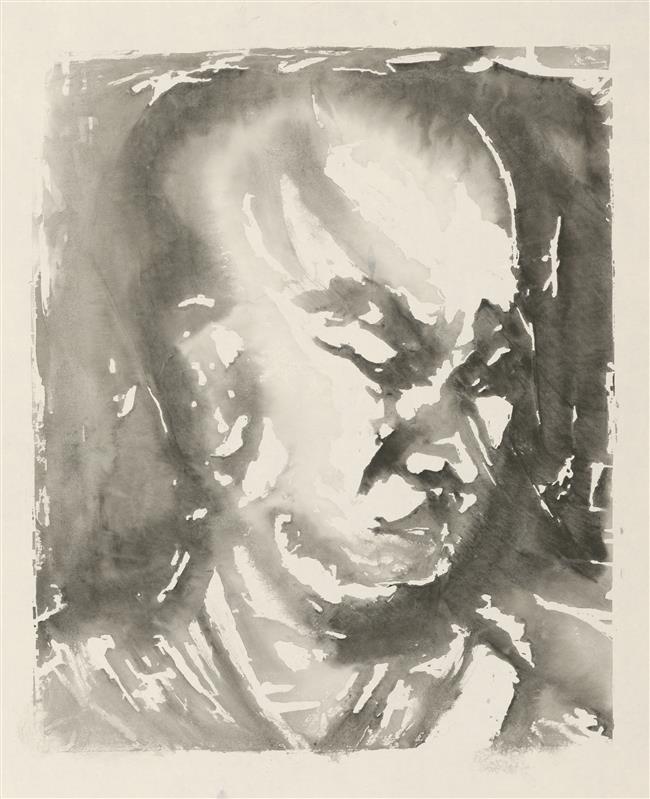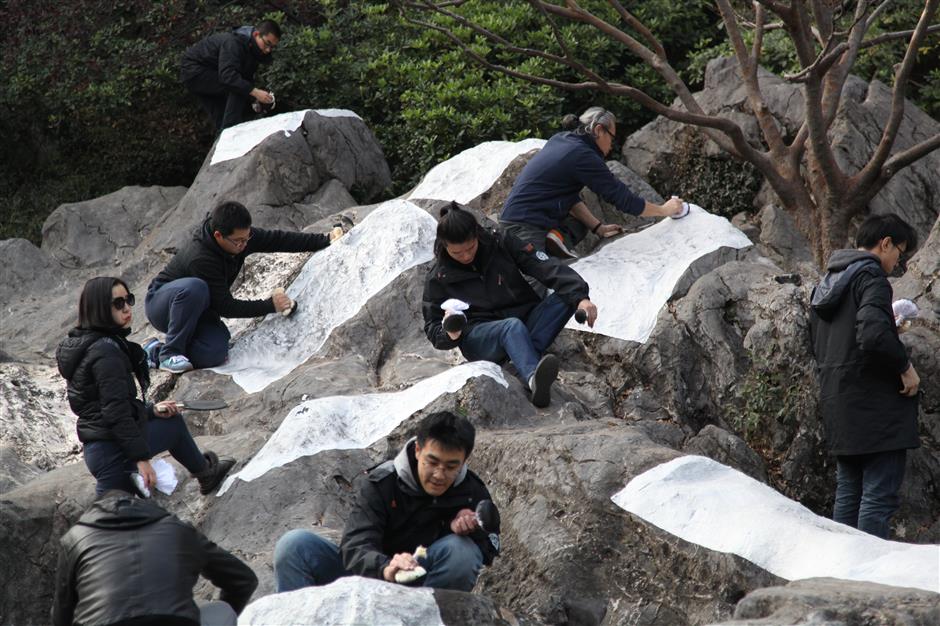Captivating exhibition displaying ancient Chinese craft of woodblock printing
A new exhibition at the Zhejiang Art Museum is revealing the ancient art of woodblock printing. China invented woodblock printing more than 1,000 years ago and the exhibit showcases the origins, variation and revival of the old technique from the Buddhist sutras in the Song Dynasty (960-1279) to the public art project in modern times.
The exhibition, presented in five parts, encompasses around 140 pieces of antiquity and contemporary artwork made by using woodblock printing techniques.

A novel illustration from the Wanli reign (1573-1620) of the Ming Dynasty
“Printmaking is a universal art language. And among all the techniques, woodblock printing is purely Chinese,” said Ying Jinfei, curator of the show. “When it came to Japan it became Ukiyo-e, which greatly influenced the Western art world later on. That is exactly what we intend to do now with this exhibition.”
The earliest woodblock printmaking as an art form is found in the frontispiece of Buddhist sutras. The Diamond Sutra, dated back to AD 868 was discovered in the Mogao Caves in the present Gansu Province in 1900. It is now part of a collection at the British Library.
The exhibition also puts together some rare antiquarian books, mostly from Ming (1368-1644) and Qing (1644-1911) dynasties. A great many are private collections and have scarcely been exhibited in a public museum.
There are illustrations from a popular novel at that time, illustrations on a go manual, and also colored letter sheet manuals and painting manuals.

A page from "The Ten Bamboo Studio Manual of Painting and Calligraphy" which represents the highest level of multi-color woodblock printing technique in ancient China
The early day woodblock printing was in black and white. When the multi-color printing technique called douban (饾版) appeared in the late Ming Dynasty, artisans used it to reproduce ink-wash paintings themed with flowers, birds, vegetation and fruit.
Prior to the invention of douban, people used multiple blocks to replicate colors on paper, which is a waste of materials and hard to ensure its precision. The douban technique however, allowed people to “print” multiple colors on paper using one block at the same time by cutting it into separate pieces, each corresponding to a small part in the painting. It represents the highest level of Chinese craftsmanship in ancient times.
“It’s not a dull, mechanical reproduction of the original work. Douban printmaking can imitate the passion and style of a painter’s brushwork. Sometimes even the painter himself could not identify if it was a remake or not,” said Ying Tianqi, a contemporary printmaking artist whose works are also featured in the exhibition.
If the manuals of painting and calligraphy are typical of a literati’s taste, douban used in the Chinese New Year pictures is much more a reflection of the folklore traditions.

A typical colored woodblock print of Chinese New Year picture
The Chinese New Year pictures refer to colored woodblock prints that usually hang on walls or doors during the Lunar New Year festival. A lot of them feature certain gods or deities that are believed to cast out evil spirits and bring luck and prosperity to the family.
The third part of the exhibition includes a fine collection of Chinese New Year pictures produced in places such as Taohuawu District in Suzhou City of Jiangsu Province, and Yangliuqing Town in Tianjin, which are known for their intricate skills and unique styles.
Apart from tracing back the history of woodblock printmaking, the exhibition also touches upon its application in a contemporary context.
The second part tracks down the exploration of contemporary artists, both young and senior, in increasing the artistic possibility of such an antiquated skill.
In Cai Feng’s “Five Hundred Luohan Project,” he juxtaposes the luohan figurehead paintings together with the woodblock he uses for each painting.
“In an era where billions of images are being seen and transmitted on WeChat and Twitter, the woodblock printmaking has lost its original function as a means of reproduction. My idea is to go back to the tradition of painting,” said Cai.
He paints directly on one woodblock and then transfers the image on to paper. Instead of being accurate, Cai purposely allows in accidental and unexpected occurrences in his art, in order to achieve a certain texture in painting or just to leave traces of “being himself.”

One piece from the "Five Hundred Luohan Project" by artist Cai Feng
For him the woodblock is the stone tablet he has made, and the paintings are the resulting rubbings created from it. Anyone can make their own versions. Not a single version will look alike.
He even plans to invite kids to participate in the future.
Chen Qi, another artist who is showcased in the unit, is assisted by computer technology for making large-sized, delicate printmaking. He has used an astonishing 96 blocks in producing a 335-centimeter-by-780-centimeter art piece of water waves, which according to him meditate on concepts of life and death.
Another highlight of the exhibition lies in its last part. Being part of a grand public art project, “Rubbing Mountains and Printing the Lake” was launched late last year to extend the subject of printmaking from books and paintings to an outdoor landscape.

Young artists rub against the rocks near the West Lake scenic area as part of a public art project.
A team of artists led by curator Ying Jinfei and professors from the Department of Printmaking at the China Academy of Art, spent hours in Wushan Hill, Fenghuang Hill and the West Lake scenic area, trying to make rubbings against the earth, engravings on stones and also bamboo trunks.
An interesting series focuses on the rubbings produced from inscriptions found on bamboo trunks in one of those tourist places, which usually include travelers’ names, dates, their wishes for the future or sometimes a vow.
The vandalism, commonly seen in China, attains a sense of monumental significance, when they are consolidated in time by such a historical form of art.
Visitors will also be able to see how the artists make all that possible with a visual reality service available at the museum.
Date: Through March 11 (closed on Mondays)
Address: Zhejiang Art Museum, 138 Nanshan Rd
Admission: Free
















